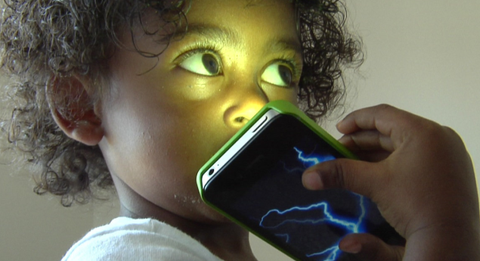Cell Phones Touching the Body Greatly Exceed Safety Limits

Do you always hold your cell phone directly against your body when using it? If that’s the case, you may want to ditch that old habit.
A recent study published in the Institute of Electrical and Electronics Engineer (IEEE) Access shows that smartphones emit radiation that exceeds the safety threshold when in direct contact with the body.
What We Know So Far
Among the sources of radiofrequency radiation are wireless devices like smartphones. There are many published journals that correlate exposure to RF radiation with short-term thermal and non-thermal effects. These include sterility, burns, and alteration of the body’s circadian rhythms.
While long-term health consequences of constant exposure to RF radiation has not yet been established, the World Health Organization (WHO) already classified RF radiation as a possible carcinogen to humans. Moreover, several studies have linked RF radiation to the growth of tumors in rats.
What’s New
Dr. Om Gandhi, chair of the Department of Electrical Engineering at the University of Utah, analyzed data published by the National Agency (ANFR) of France on the specific absorption rate (SAR) of 450 cellular phones.
In Dr. Gandhi’s assessment, he found out that at least 90 percent of these handheld devices exceeded the safety limit imposed by the US Federal Communications Commission (FCC) and the International Commission on Non-Ionizing Radiation Protection (ICNIRP).
Related: FRENCH PHONEGATE SCANDAL: SMARTPHONE RADIATION HIGHER THAN MANUFACTURERS CLAIM
For instance, the FCC’s prescribed limit on SAR is 1.6 W/kg for any 1 gram of tissue. Meanwhile, ICNIRP’s standards are more lenient, which is at 2.0 W/kg for any 10 grams of tissue.
But Dr. Gandhi’s research illustrated that the popular smartphone brands, such as HTC, Apple, Samsung, and Motorola, have SAR values ranging from 3.11 W/kg to 7.42 W/kg. These phones were evaluated when they are at 0 mm in distance with the subject, or directly close to the body.
Further testing at 5 mm distance showed a dramatic decrease in SAR values, ranging from 1.11 W/kg to 3.63 W/kg. While the data demonstrated that some smartphones are within the recommended SAR limits, 60 percent of the tested phones went beyond the prescribed FCC limitation. You can see the full results here.

Interestingly, most of these smartphone manufacturers recommend their users to make phone calls at 15 mm to 25 mm distance from the body. For example, an HTC One SV handset has a SAR of 7.183 W/kg at 0 mm. But at 15 mm, its SAR shrank to 0.355 mm.
It should be noted that HTC’s suggested distance when fielding calls is at 15 mm, which, according to Dr. Gandhi is impossible especially in crowded and noisy environments.
Dr. Gandhi’s research also showed that the SAR limitations were set for male adults only. According to studies, women and children have “thinner pinna and skulls." Because of this, they are more likely to use their phones at a much shorter distance.
Also Read: CELLS PHONE RADIATION & BRAIN TUMORS: SHOCKING RESEARCH DISCOVERY

What You Can Do
Health advocates are pushing for stricter regulations on SARs and RF radiation in handheld devices. But on your part, smartphone users are advised to take precautionary measures in using their devices.
For instance, it is best to use the hands-free mode on your phone when fielding or accepting calls. Using anti-radiation sleeves can also help in blocking the harmful RF radiation. Safesleeve offers an anti-radiation smartphone, tablet, and laptop sleeves that are proven to shield you from RF radiation. Get yours here today.

